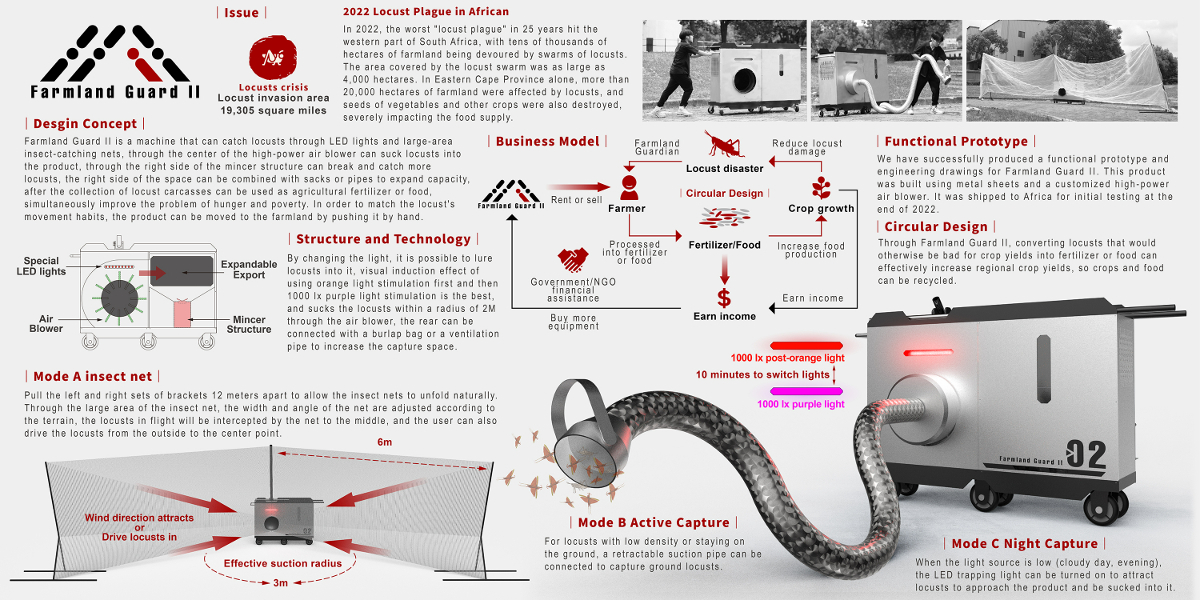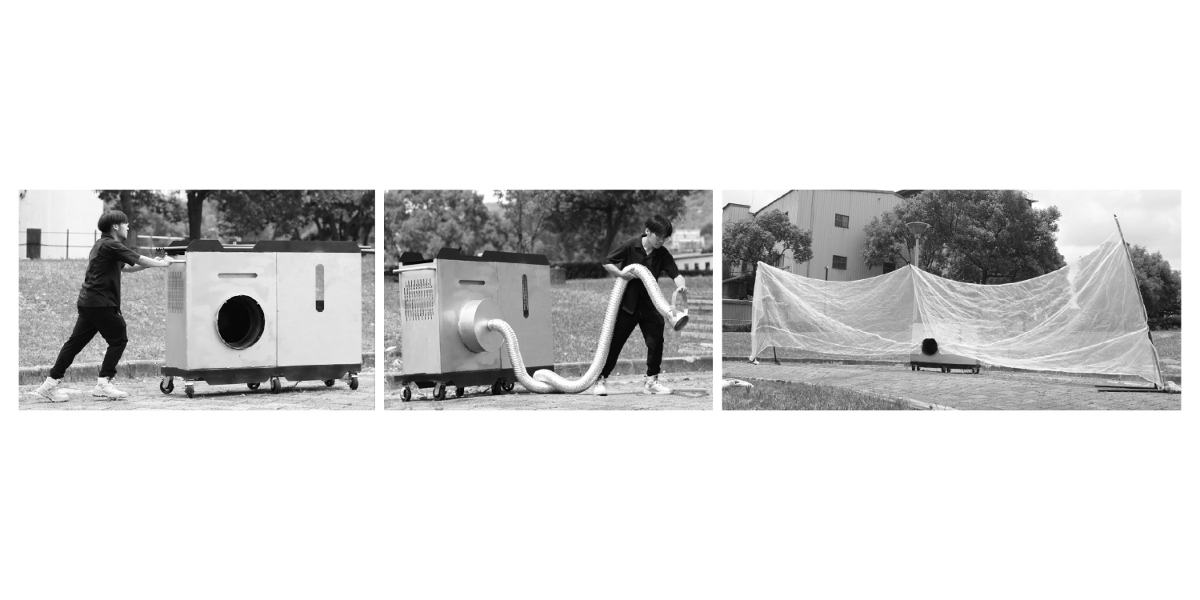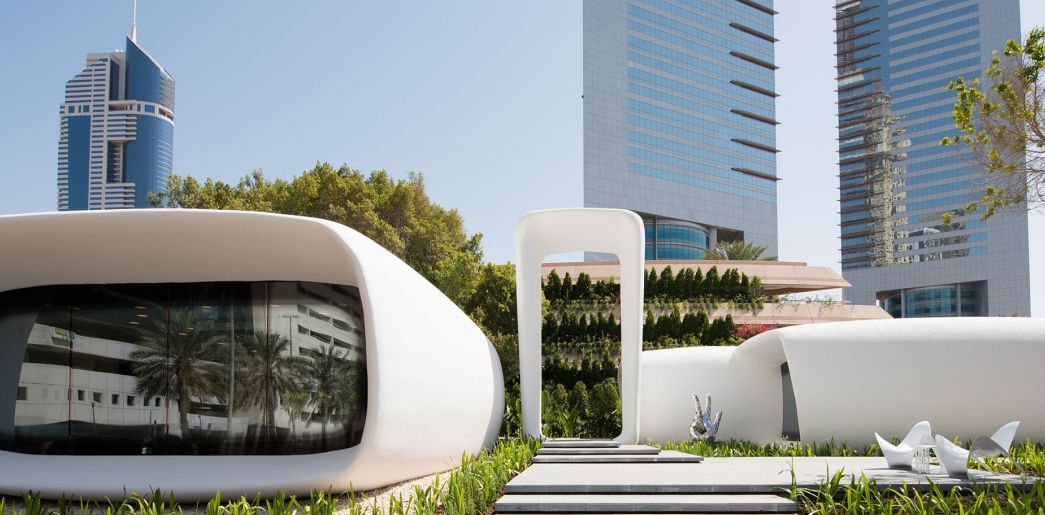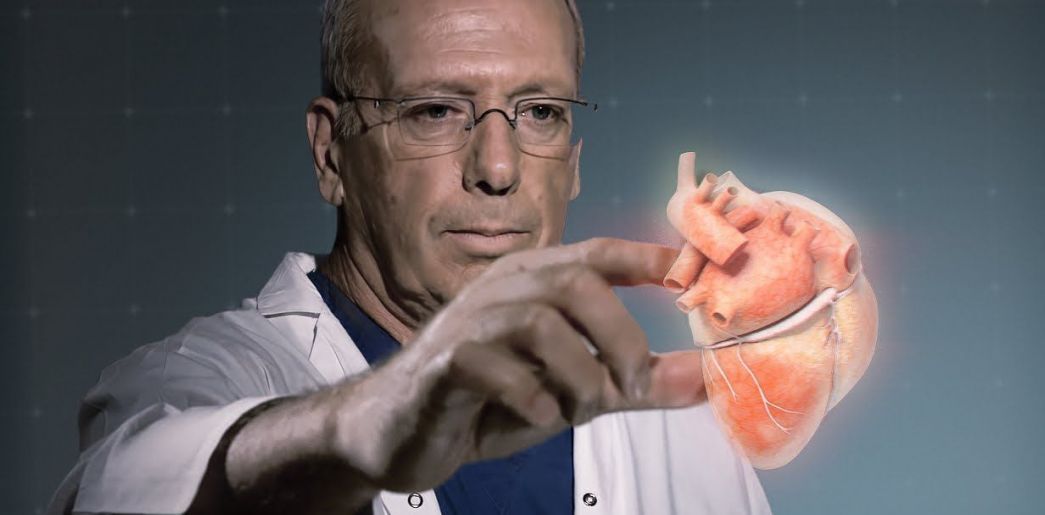AWARD YEAR
2023
CATEGORY
Work
GOALS
No Poverty, Zero Hunger, Good Health & Well-being, Decent Work & Economic Growth, Life On Land
KEYWORDS
food crisis, circular design, Locust Plague, Africa, fertilizer
COUNTRY
Taiwan
DESIGNED BY
Chien-Chen Lai, Kai-Chu Li
WEBSITE
https://www.instagram.com/tosky_design/
Farmland Guard II
Farmland Guard II is a machine that can catch locusts through LED lights and large-area nets.
How does it work?
The center of the high-power air blower can suck locusts into the product, through the right side of the mincer structure can break and catch more locusts, the right side of the space can be combined with sacks or pipes to expand capacity, after the collection of locust carcasses can be used as agricultural fertilizer or food, simultaneously improve the problem of hunger and poverty. In order to match the locust's movement habits, the product can be moved to the farmland by pushing it by hand.
By changing the light, it is possible to lure locusts into it, visual induction effect of using orange light stimulation first and then 1000 lx purple light stimulation is the best, and sucks the locusts within a radius of 2M through the air blower, the rear can be connected with a burlap bag or a ventilation pipe to increase the capture space.
Why is it needed?
In 2022, the worst "locust plague" in 25 years hit the western part of South Africa, with tens of thousands of hectares of farmland being devoured by swarms of locusts. The area covered by the locust swarm was as large as 4,000 hectares. In Eastern Cape Province alone, more than 20,000 hectares of farmland were affected by locusts, and seeds of vegetables and other crops were also destroyed, severely impacting the food supply.
How does it improve life?
We have successfully produced a functional prototype and engineering drawings for Farmland Guard II. This product was built using metal sheets and a customized high-power air blower. It was shipped to Africa for initial testing at the end of 2022.
Through Farmland Guard II, converting locusts that would otherwise be bad for crop yields into fertilizer or food can effectively increase regional crop yields, so crops and food can be recycled.







